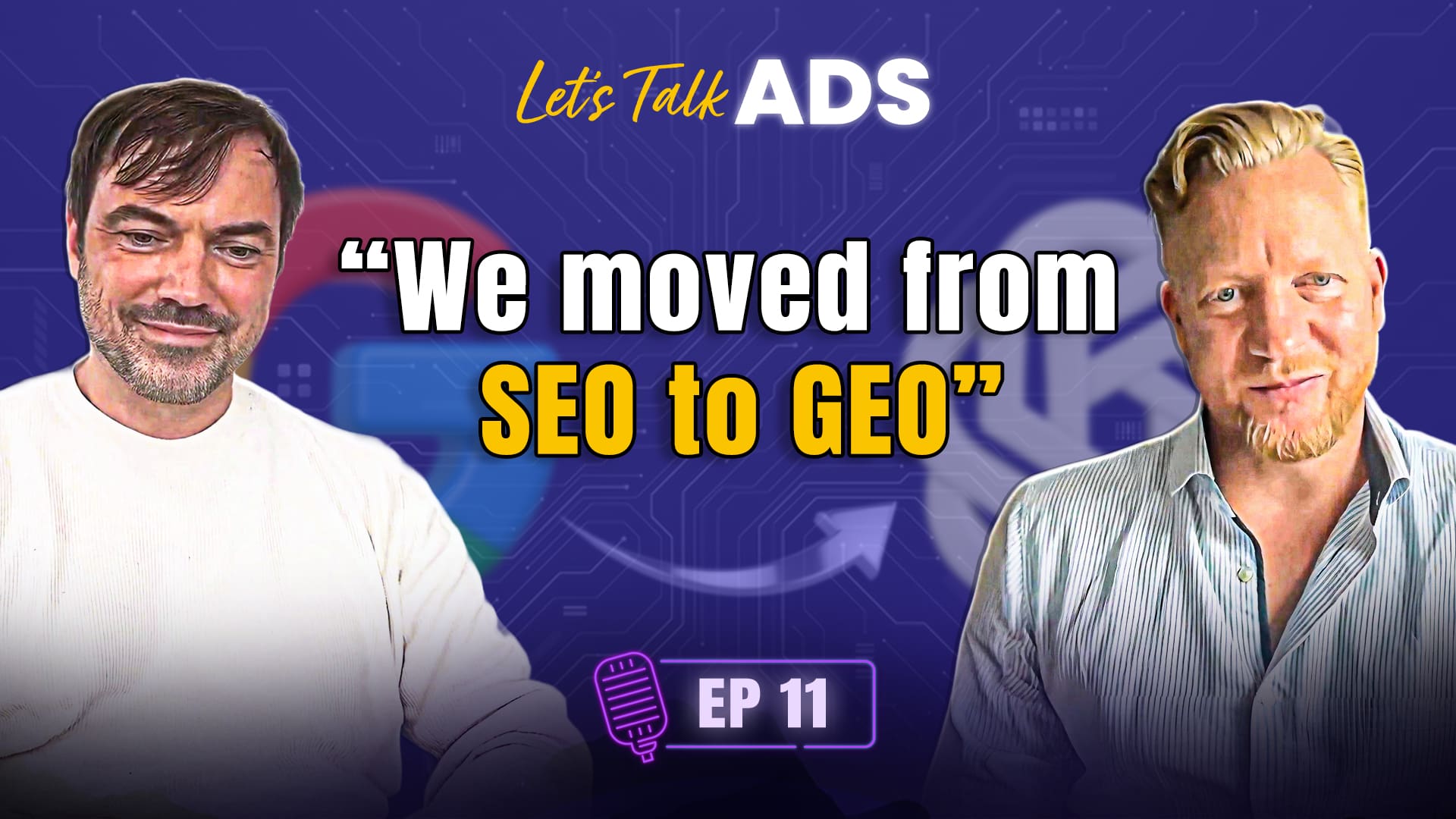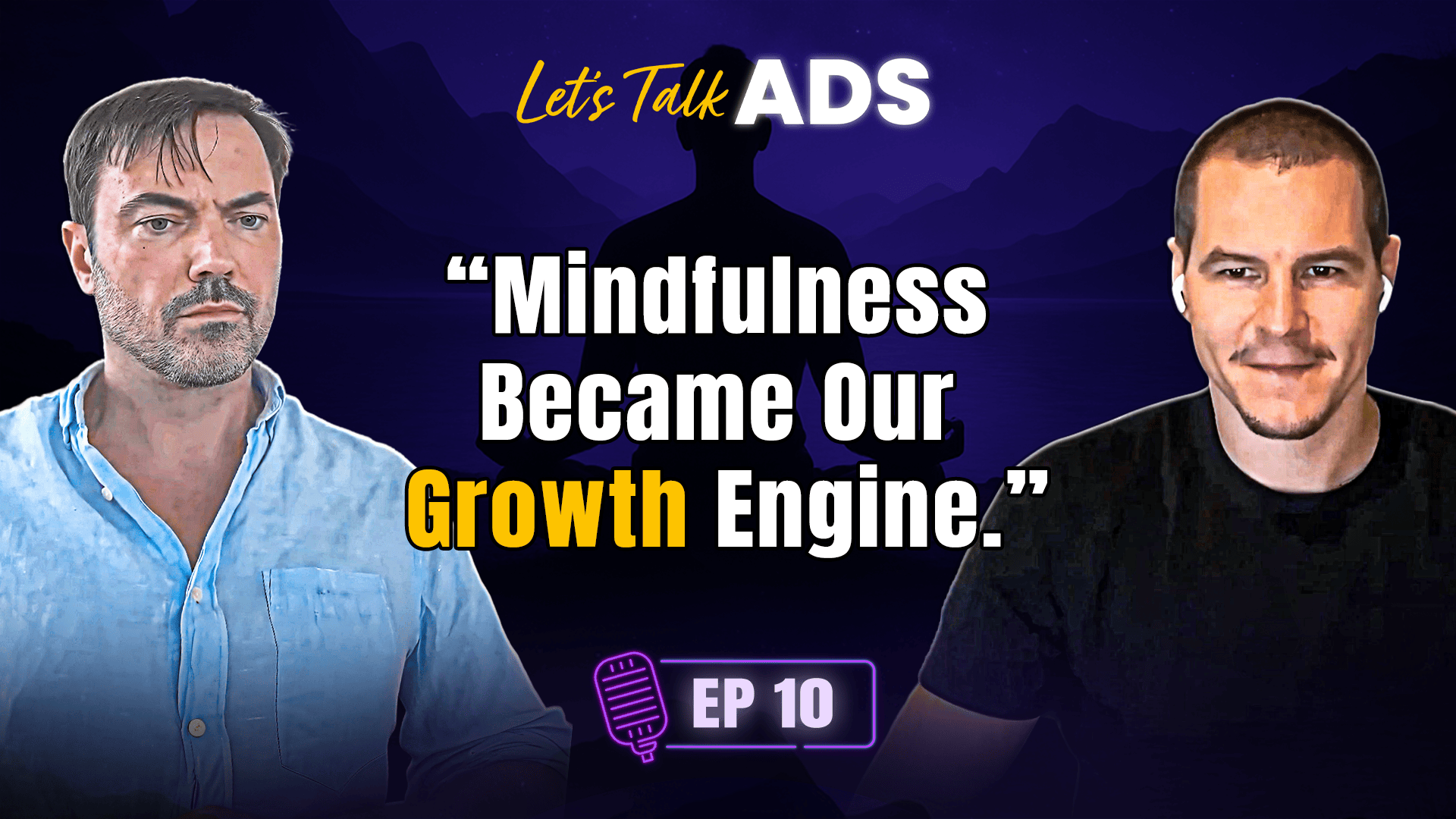I speak with user acquisition managers daily – and it’s time for me to say this: Stop blaming your budget; start understanding your ad’s impact.
Table of Contents
Ever since I began here @ Admiral Media, I noticed how we’re all about hitting the right notes with our audience through messages that resonate personally.
But, let’s cut through the buzzwords and dive into the real talk about why some app ads don’t do the job. And how to change that…
Creatives need to be more than just eye candy; they must answer the “What’s in it for me?” for the audience. It’s about hitting that spot where your ad not only captures attention but convinces them that they need your app in their life.
This requires a blend of creativity, science, and a bit of marketing magic—constantly testing, iterating, and above all, accepting that what worked yesterday might not work today.
Why your app? Answering the big question upfront
The value proposition of an app is what makes it stand out in a saturated market where competition is relentless. It’s a statement that not only highlights how your app addresses user needs and delivers tangible benefits, but also sets your app apart from the competition.
Essentially, it’s the “why” behind your app – why it matters to the target audience and why it deserves their attention and loyalty.
Conveying this value proposition effectively in your marketing creatives is not just important; it’s critical. It’s about making a compelling case to your audience, showing them how your app can improve their lives in ways no other app can (and hopefully, that’s true 🤞).
This involves crafting messages that resonate on a personal level, turning potential interest into active engagement. It’s not merely about telling your audience what your app does but illustrating its unique value in their lives, making it an indispensable solution to their problems. You might have heard the saying “Benefits over features” and this is something we’re 100% focused on, in our design team – when crafting new creatives.
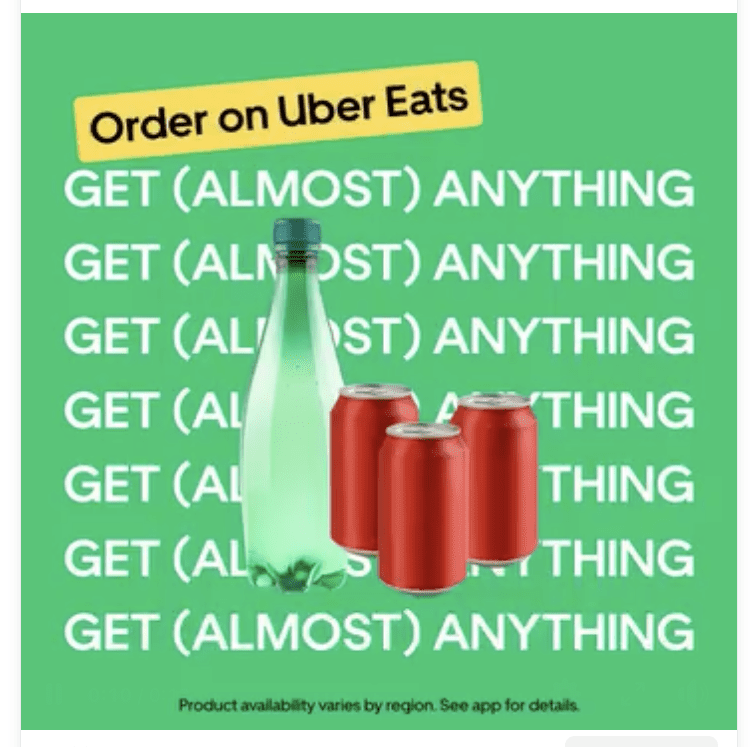 For Uber Eats – You don’t have to Just Eat Food. Gummies can also be necessary for young audiences that use the app.
For Uber Eats – You don’t have to Just Eat Food. Gummies can also be necessary for young audiences that use the app.
Marketing your value proposition requires a deeper understanding of your audience’s needs, desires, and challenges.
It’s about engaging in a conversation that says, “We understand you, we’ve got what you need, and here’s why we’re your best choice.”
This approach can help you turn your app from just another option to the preferred choice, ensuring that your target audience not only recognizes but is compelled by the value your app promises to deliver.
Tailor-made or Tailor failed?
Understanding your audience is also knowing where they spend their time and how they interact within various digital environments. Each ad network and social media platform is a unique ecosystem with its own set of rules, norms, and user expectations. Recognizing this diversity is crucial for maintaining relevance and connecting with the audience on a personal level.
What captivates audiences on Instagram might fall flat on Twitter, and a strategy that shines on TikTok could be invisible on LinkedIn. Each platform offers a unique blend of demographics, user behavior, and content consumption patterns. You should not just repurpose your content across platforms; rather reimagine how your value proposition is presented to fit seamlessly into each platform.
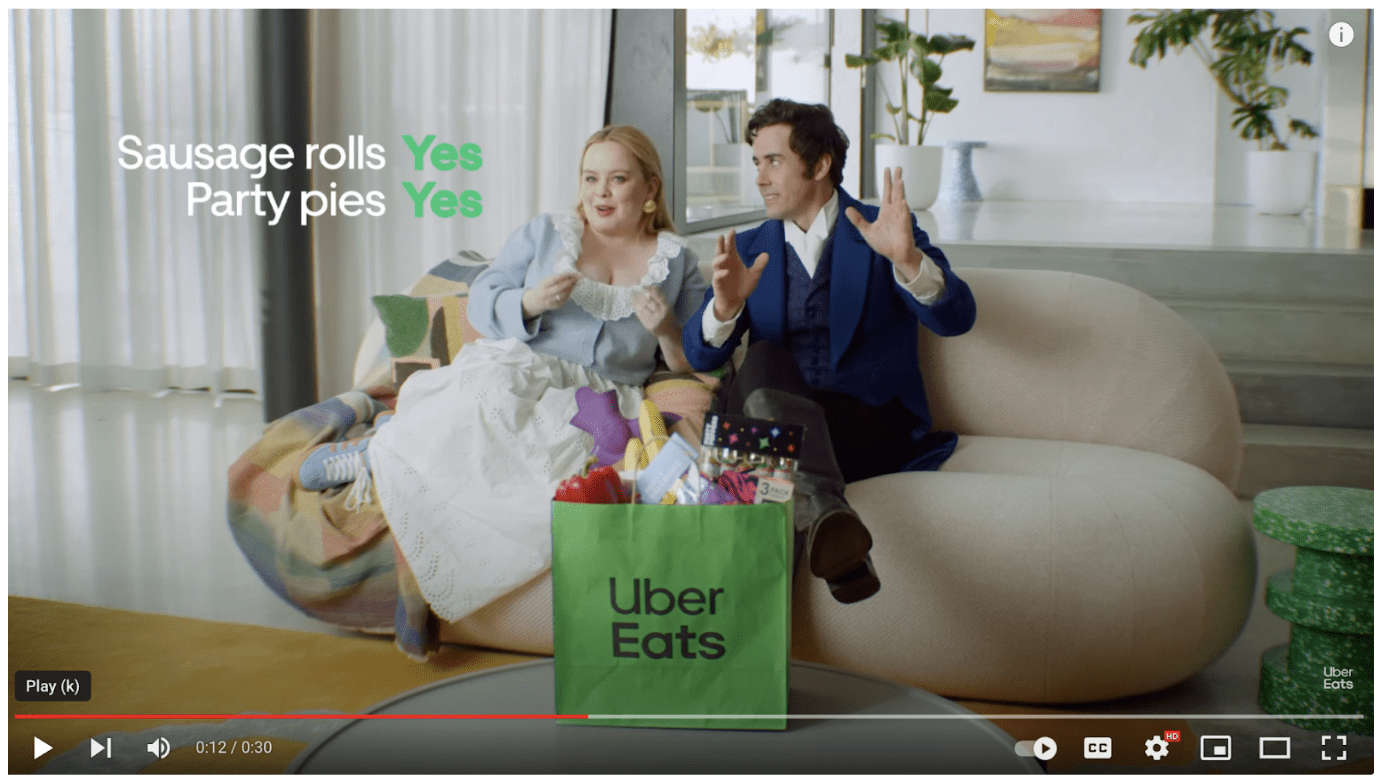
Uber Eats’ “Get Almost Anything” campaign on YouTube features unique visuals and longer videos.
This strategy works well on YouTube to increase product awareness, focusing on providing valuable information and meaningful messages rather than just immediate needs.
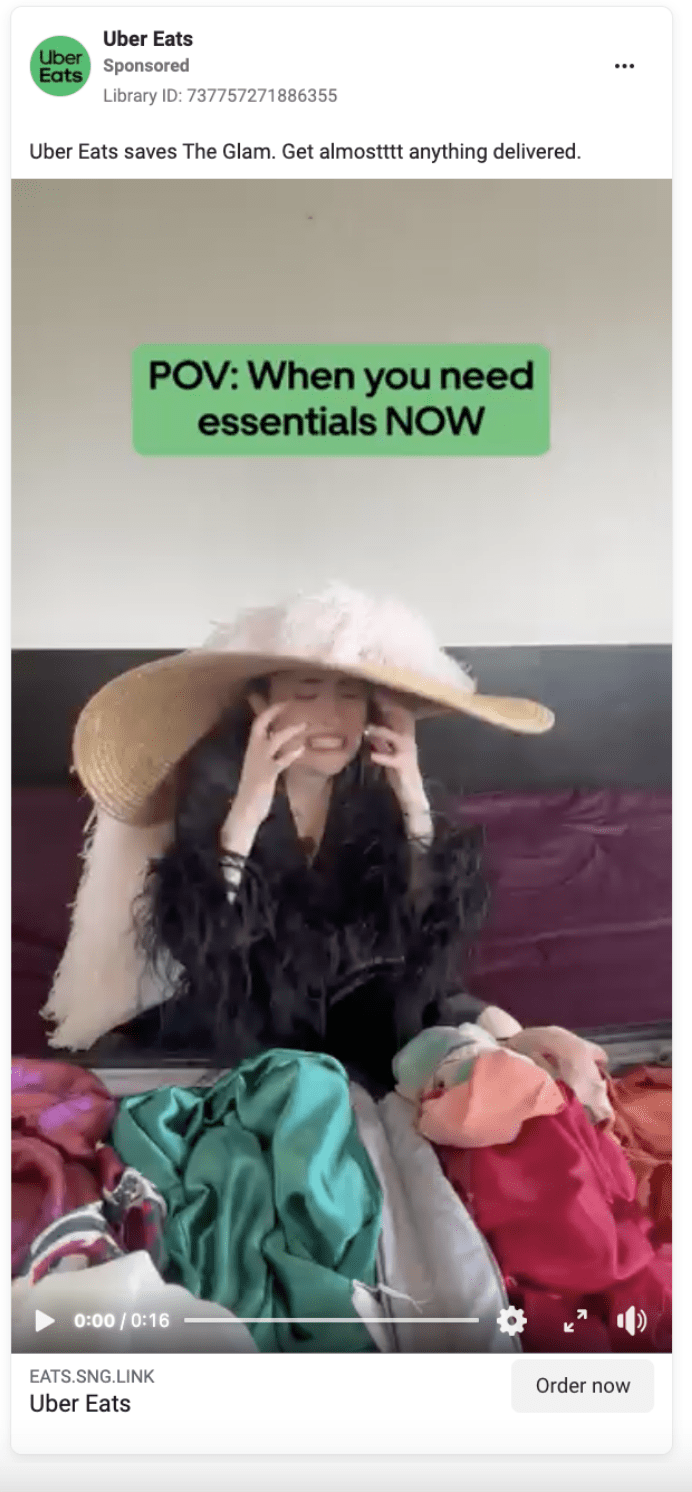
Uber’s “Get Almost Anything” campaign on Meta.
In social media, ads using people do not always leverage high quality images and Hollywood celebrities. Popular creators, music and hook trends can be more relevant and gain more conversions.
Personalize to persuade (and make use of creative testing)
Personalization Is the ‘New Black’, in the quest to captivate your audience and make them convert, personalizing messages to resonate with your audience is a necessity. Digital platforms are filled with generic calls to action and one-size-fits-all messaging. So…making personalized communication will be a key differentiator in a crowded market.
Achieving a higher level of personalization requires more than knowing the audience; it demands a rigorous process of creative testing, iteration, and refinement.
Creative testing allows us to explore a wide spectrum of messaging angles—both emotional and functional—to find what truly strikes a chord with audiences. This iterative process involves crafting multiple variations of our ads, each with a different focus, tone, visuals, or style, and testing them across our target demographic. Through this, we’re not just guessing what might resonate; we’re using data to identify which messages perform best, providing invaluable insights into our audience’s preferences and behaviors. This approach empowers us to refine our strategy, tailoring our messaging to amplify relevance and engagement.
Onboarding insights from these tests require a keen eye for what indicates an audience’s preference.
- Emotional angles might tap into the aspirations, fears, or desires that drive user behavior
- Functional angles highlight the practical benefits or solutions provided by your app.
Balancing these insights allows us to craft a narrative that speaks directly to the heart of our audience’s needs and desires.
 This process of personalization and testing is iterative and ongoing. As our audience evolves, so too must our messages. By continually refining our approach based on the latest insights, we ensure that our marketing efforts remain relevant and effective, resonating with our target audience in a way that feels both timely and timeless.
This process of personalization and testing is iterative and ongoing. As our audience evolves, so too must our messages. By continually refining our approach based on the latest insights, we ensure that our marketing efforts remain relevant and effective, resonating with our target audience in a way that feels both timely and timeless.
The price of ignoring user-centric creatives
Forgetting about the essence of user-centric storytelling and an iterative creative approach in app creatives can significantly impact your marketing budget and reduce overall performance marketing effectiveness. Let’s break down these chilling realities:
- Decreasing conversion rates: Ads that miss the mark on relatability, tends to see lower engagement- and conversion rates, essentially turning your ad budget into digital dust as potential users scroll past without a second thought.
- Increasing cost per acquisition (CPA): With non-engaging creatives, your efforts to attract and convert new users become increasingly expensive, pushing your CPA to unsustainable levels.
- Missed optimization opportunities: The absence of an iterative, data-driven approach means you’re bypassing crucial opportunities to refine and enhance your ads based on user feedback and performance metrics.
- Growth stagnation: Without the ability to effectively optimize and pivot your strategies, your app’s growth potential is stifled, making it difficult to scale your marketing efforts or achieve long-term success.
Your creatives must always act not as hopeful attempts, but as targeted efforts designed for impact.
This strategic focus ensures that your marketing budget is an investment towards tangible results, driving down costs while amplifying outcomes.
So, in conclusion
The journey to getting those downloads and conversions is a bit like a rollercoaster – there are ups, downs, and a couple of loops thrown in for good measure.
The art of app advertising isn’t just about throwing ideas at the wall to see what sticks—it’s about precision, understanding, and focus on the audience. Along this article we’ve carved out a blueprint for turning passive viewers into active participants in your app’s story. Ignoring these principles is a risky move.
From highlighting your value proposition to resonate deeply with potential users by adapting your messages across various platforms, every aspect demands attention. The ‘Why’ behind your app needs to be clear and compelling; it’s the beacon that guides users from curiosity to commitment.
Without a user-centric approach, you’re not only risking your creative effectiveness but also watching your meticulously allocated budget burn away. Poorly targeted, non-relatable ads bleed money, pushing your CPA higher as your campaigns turn inefficient. Moreover, failure to iterate based on audience engagement freezes your strategy, unable to evolve.
But don’t panic! Embrace these four pillars of successful app advertising—value clarity, platform-specific customization, relentless personalization, and rigorous creative testing—and you set the stage for a narrative where your app isn’t just seen but sought after. Dismiss them, and you risk being relegated to the background noise of the app store.
Looking to create ads that do more than just catch the eye, but actually stick in people’s minds and get them to take action?
You’re in the right place. Our team’s all geared up and excited to dive into the creative ring with you. Let’s make some noise and turn those creative ideas into gold.
